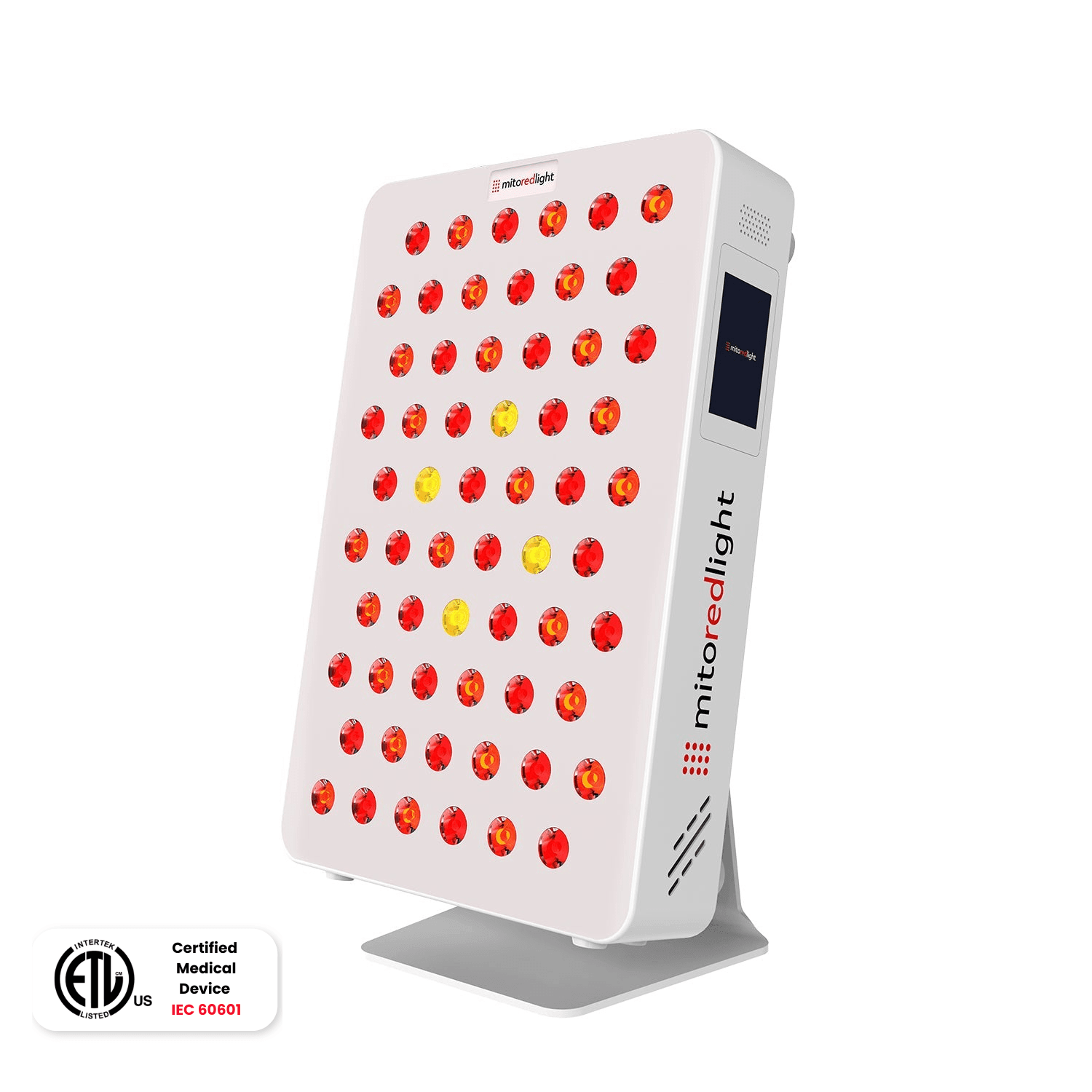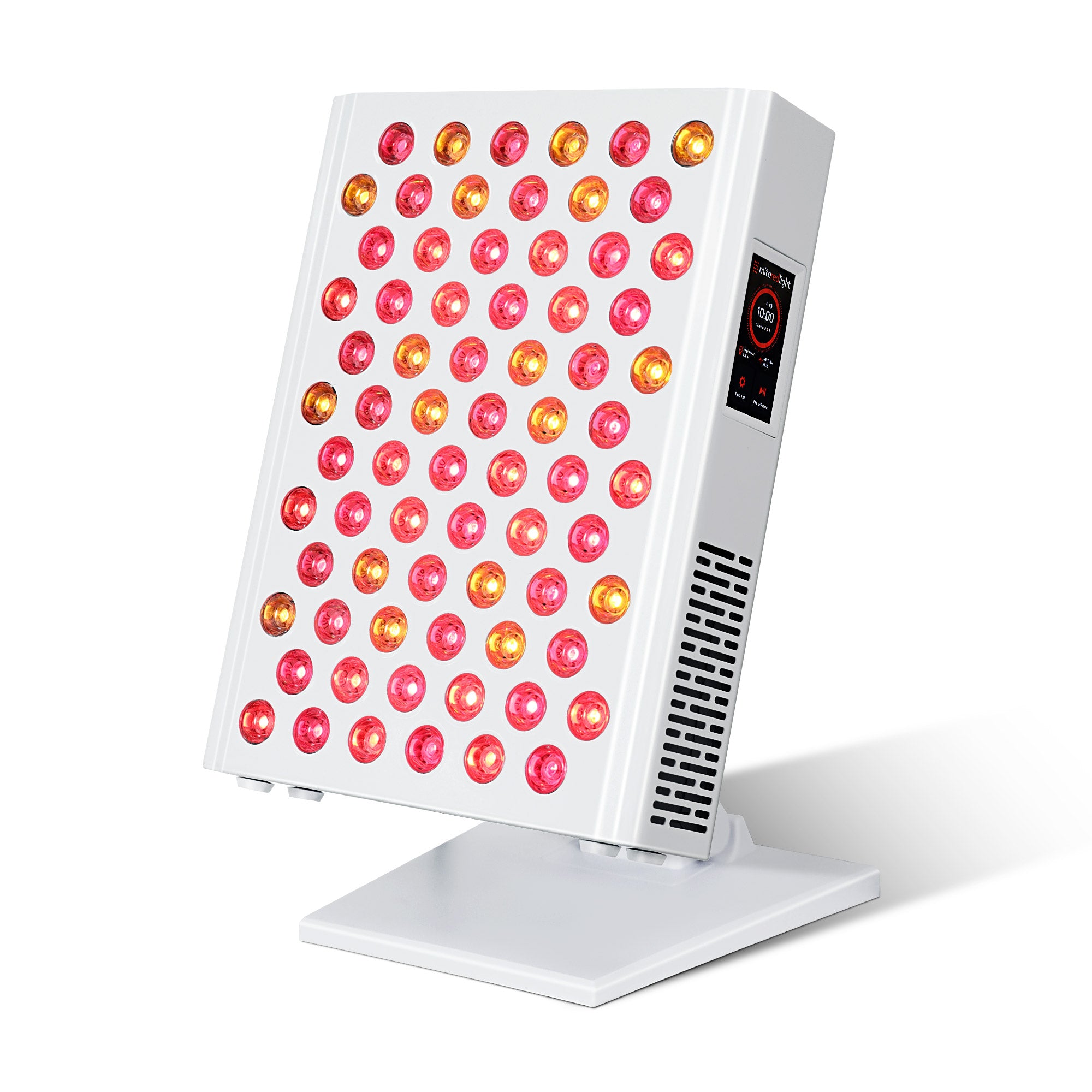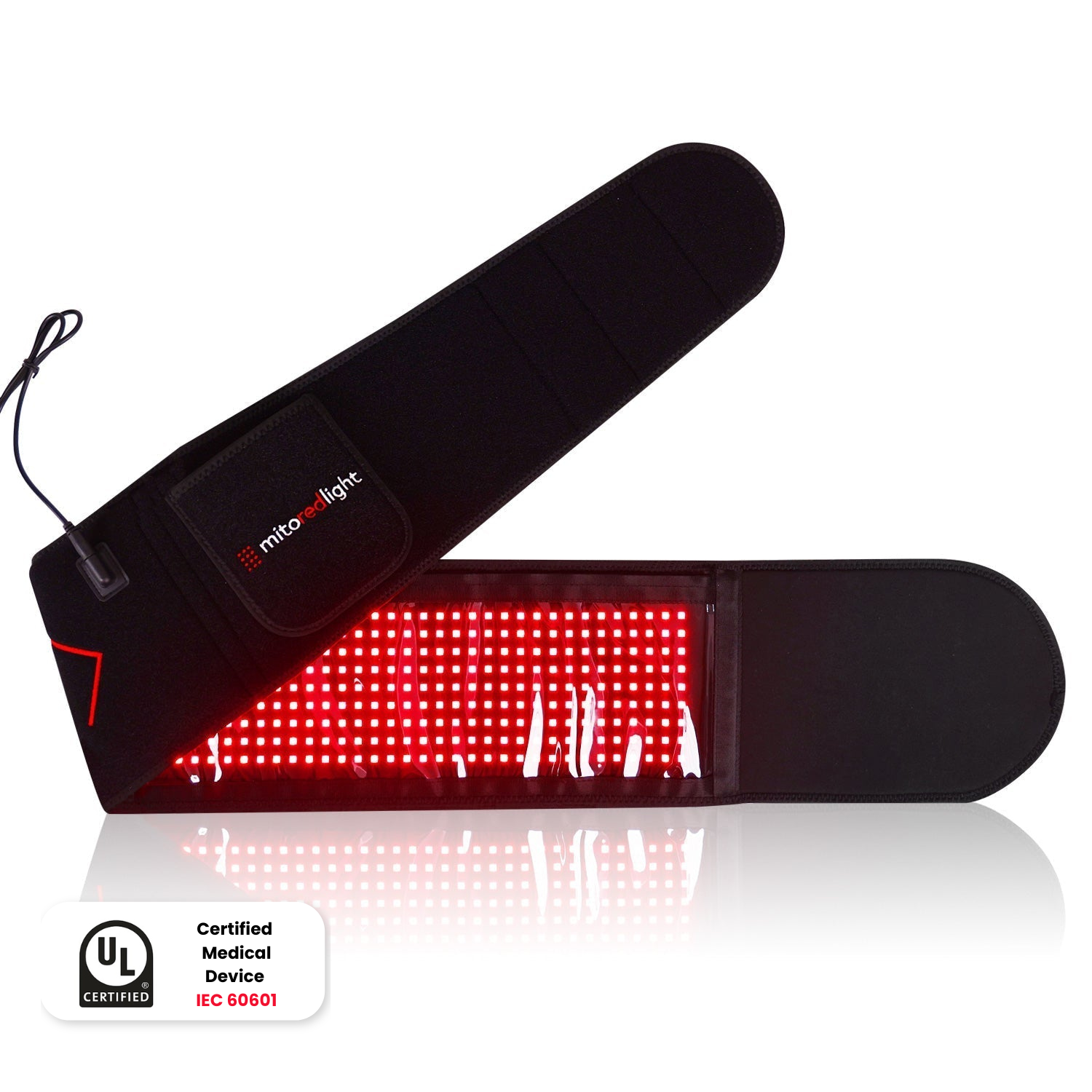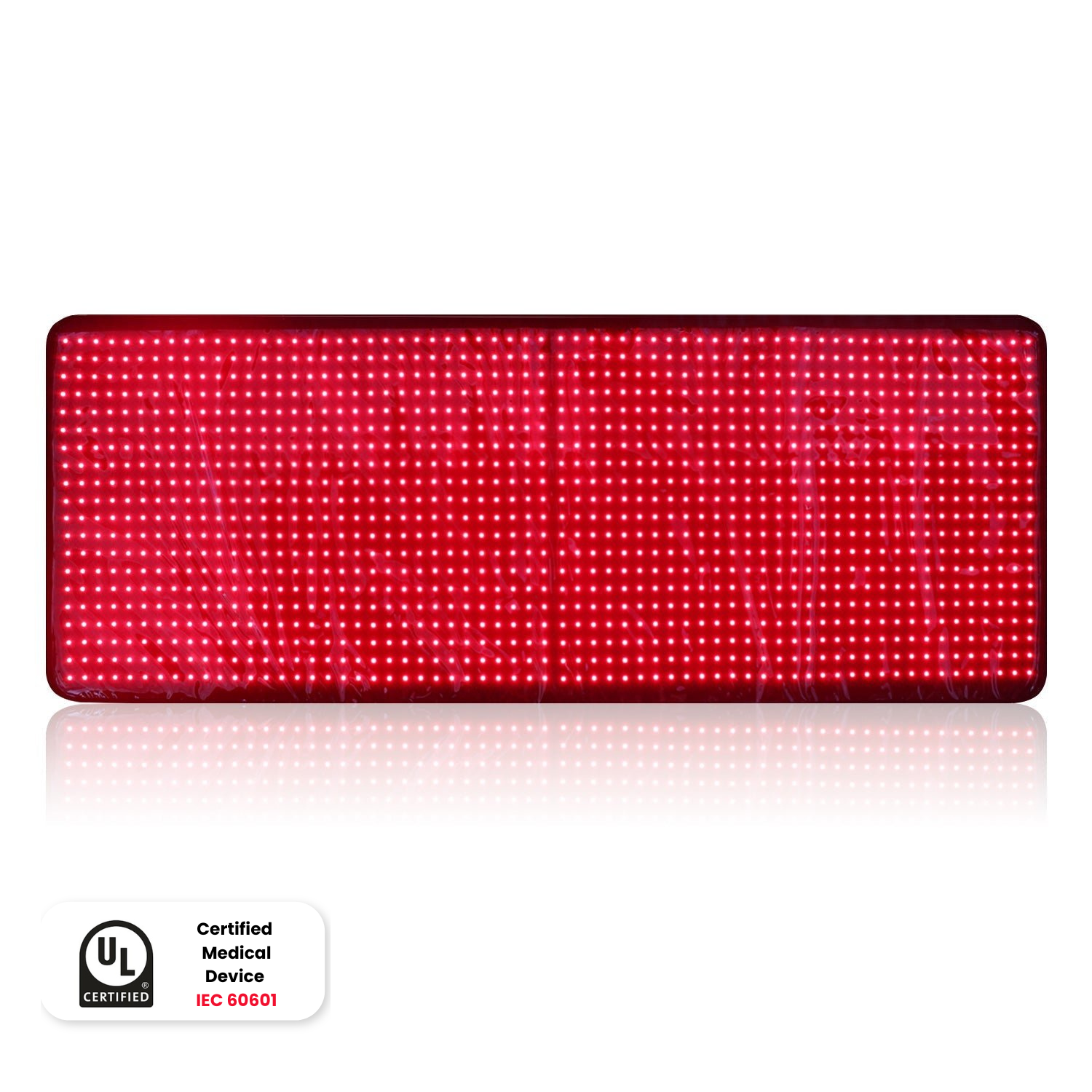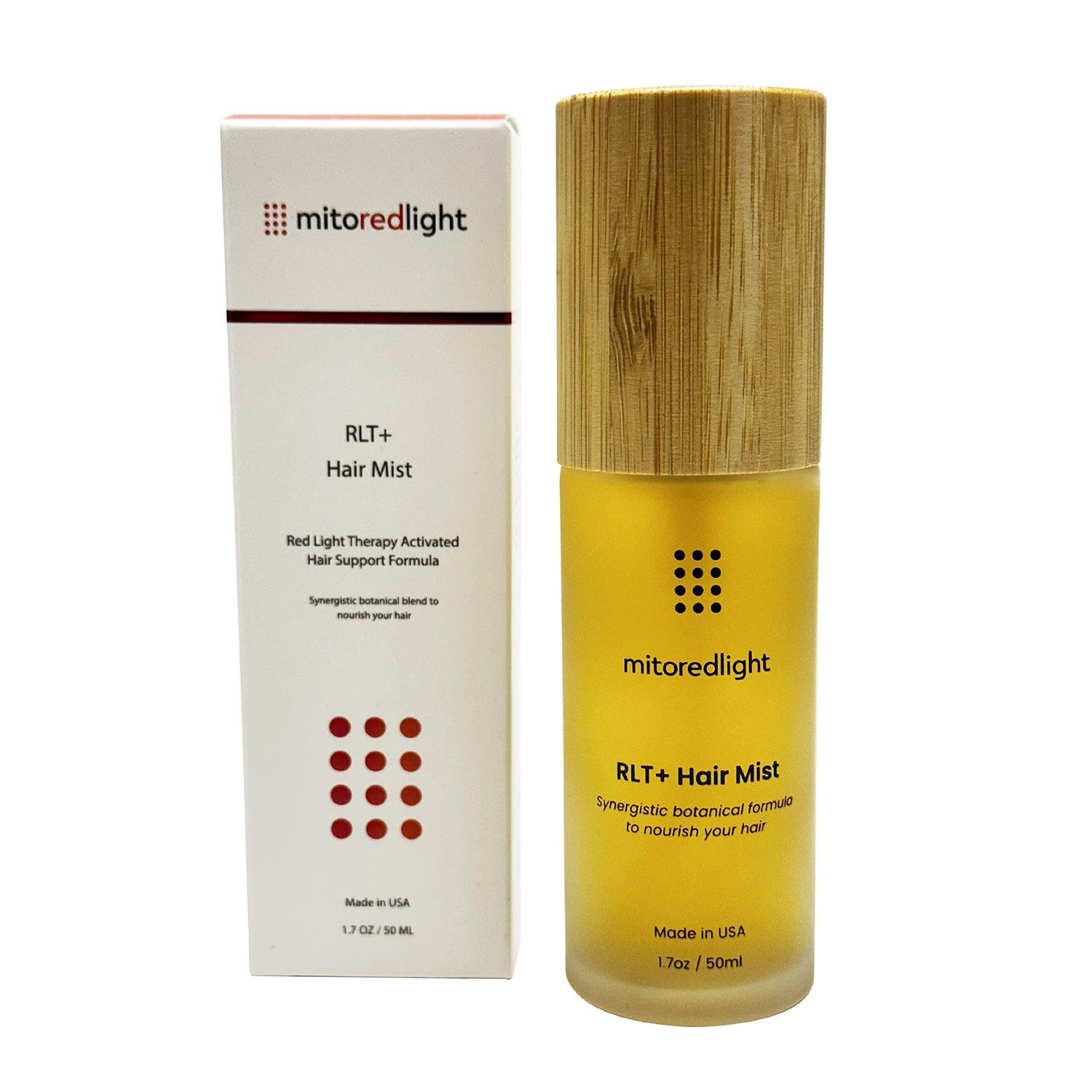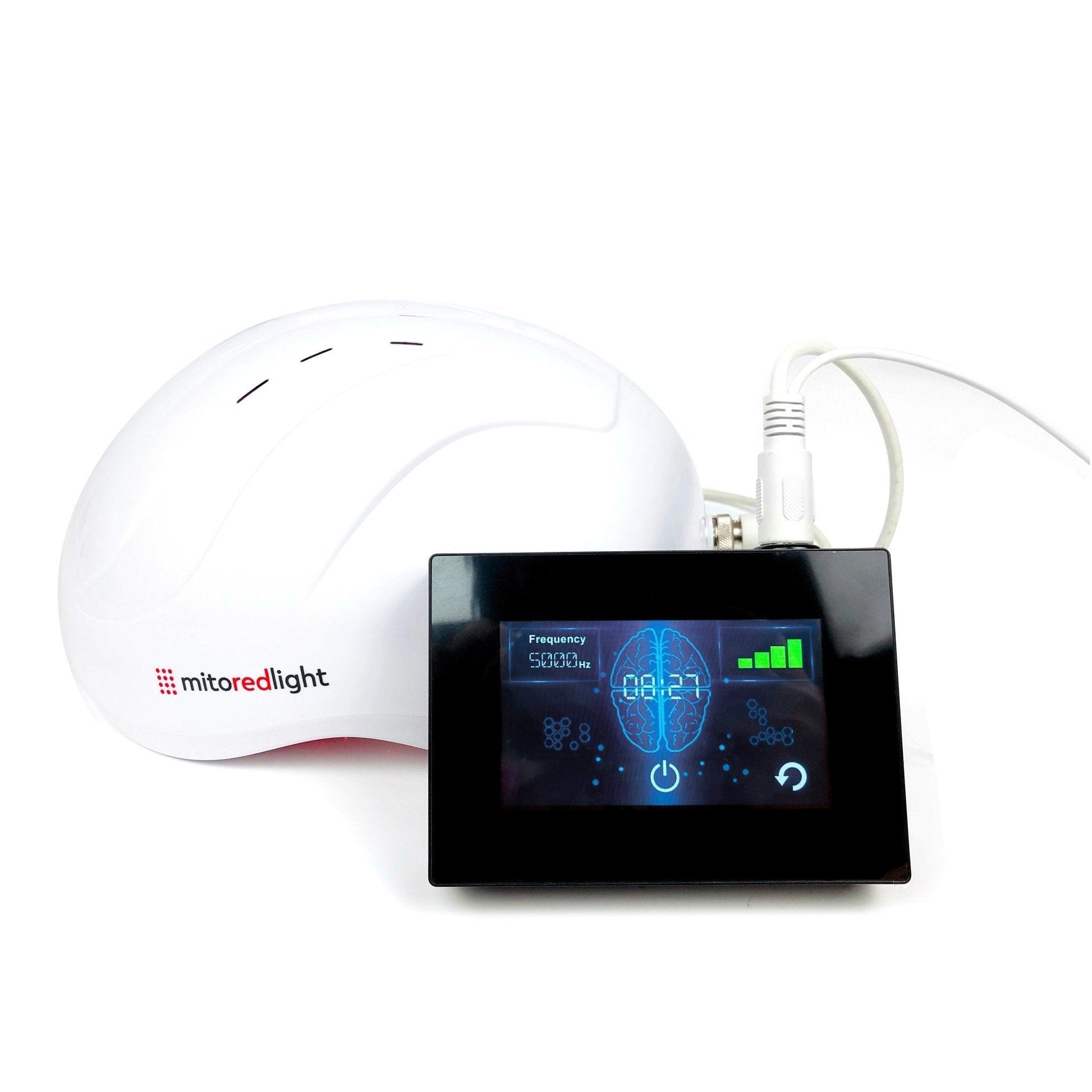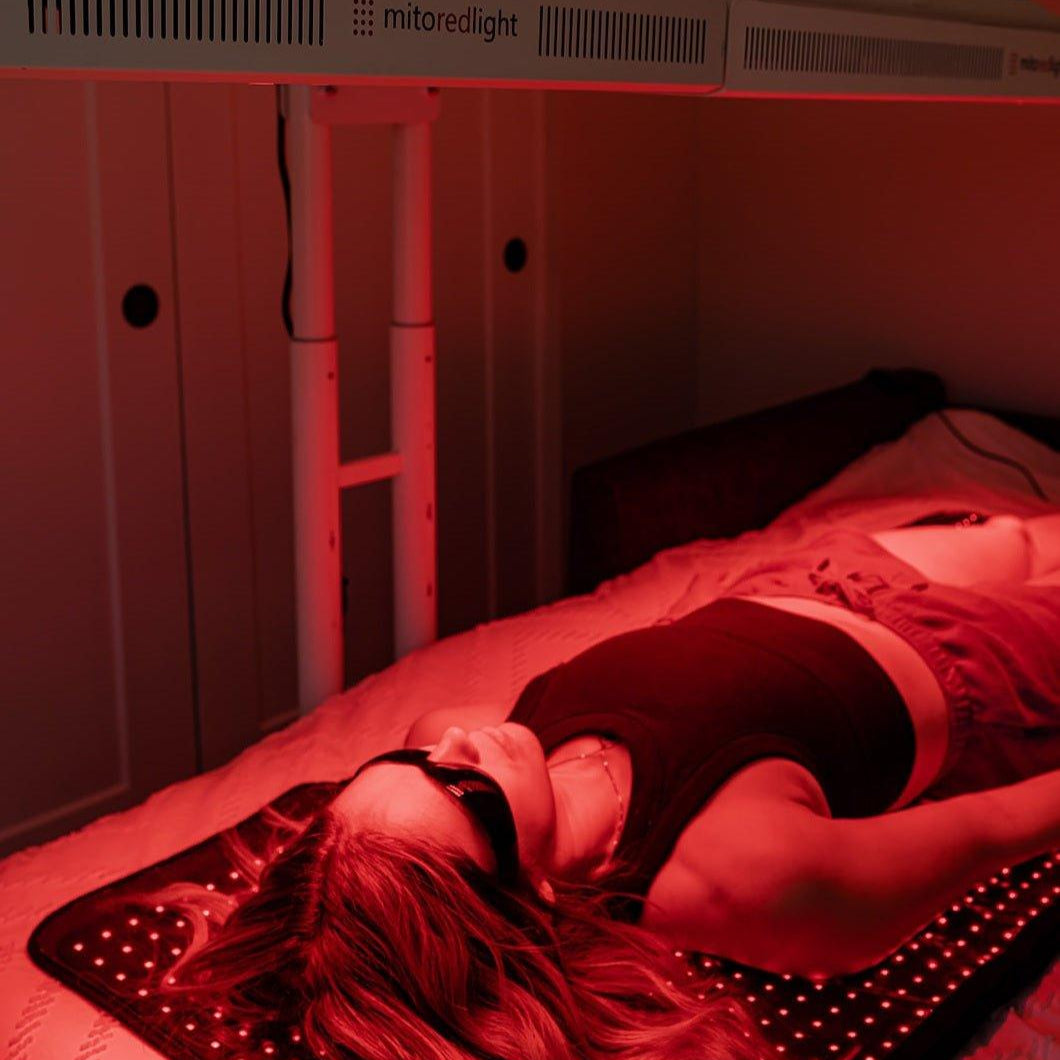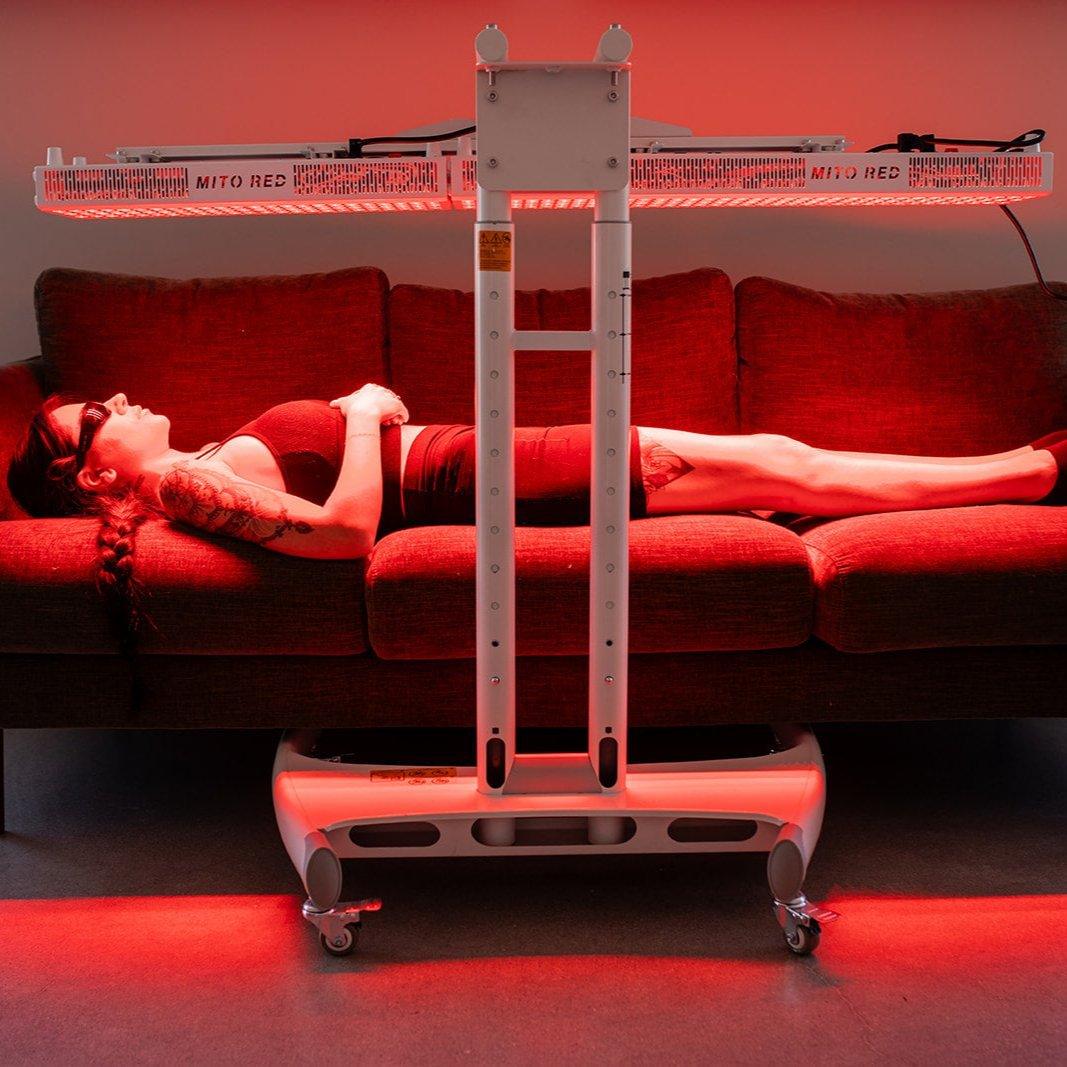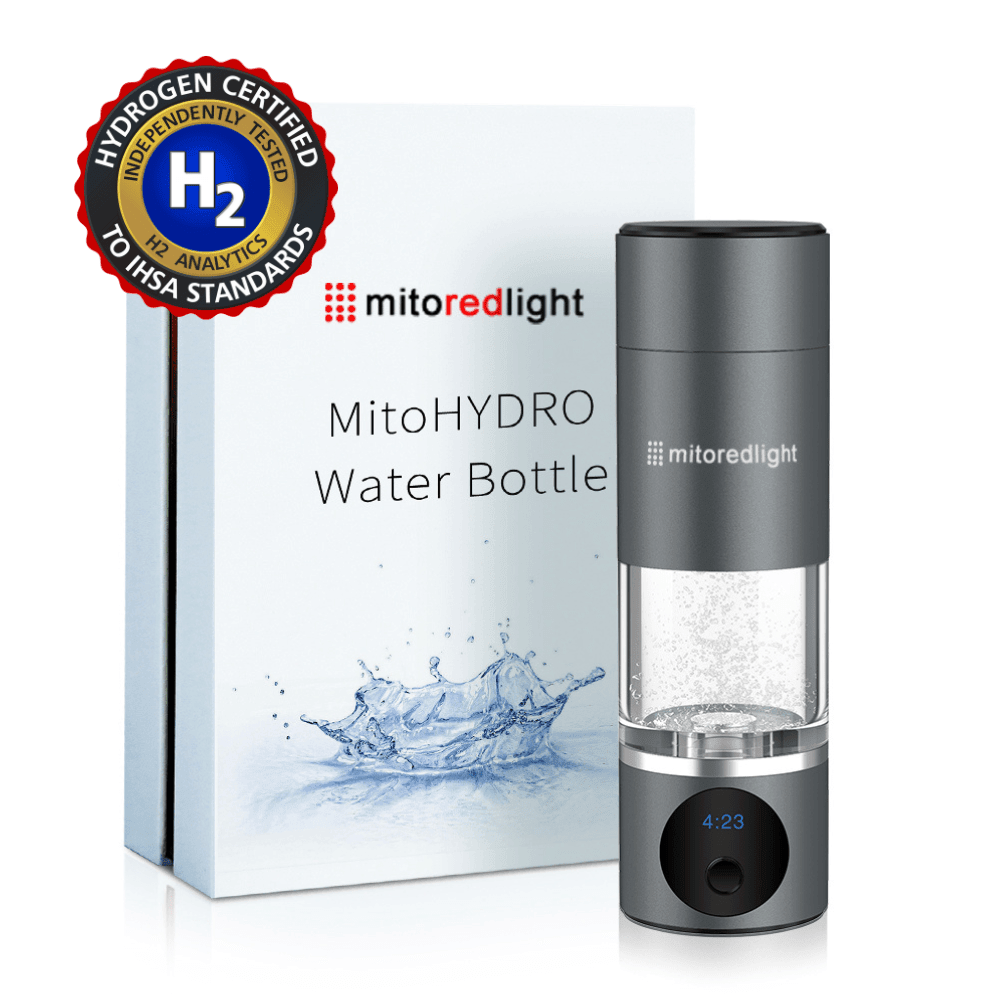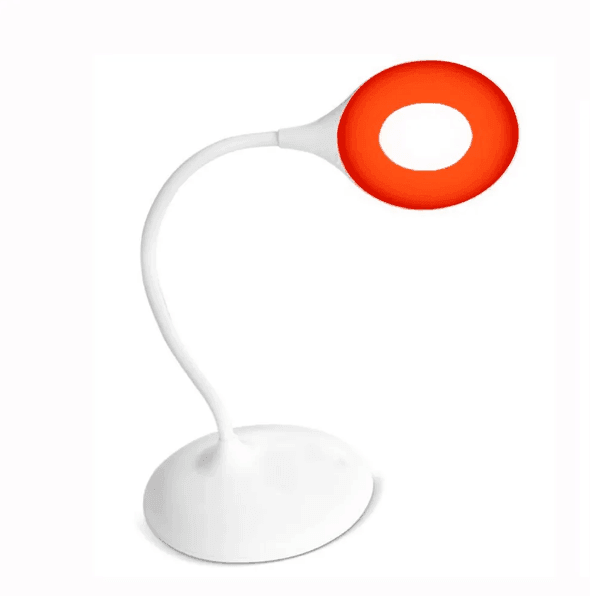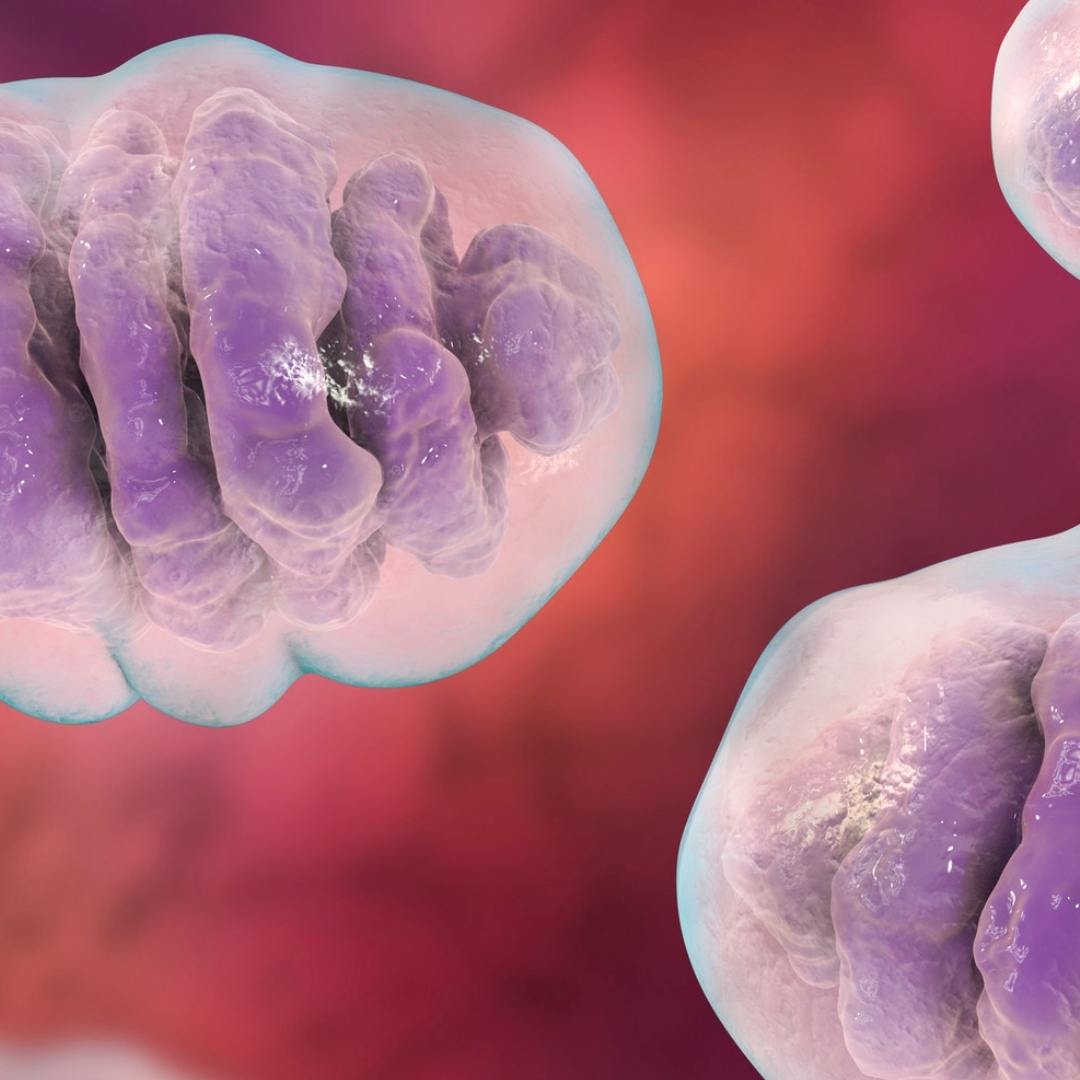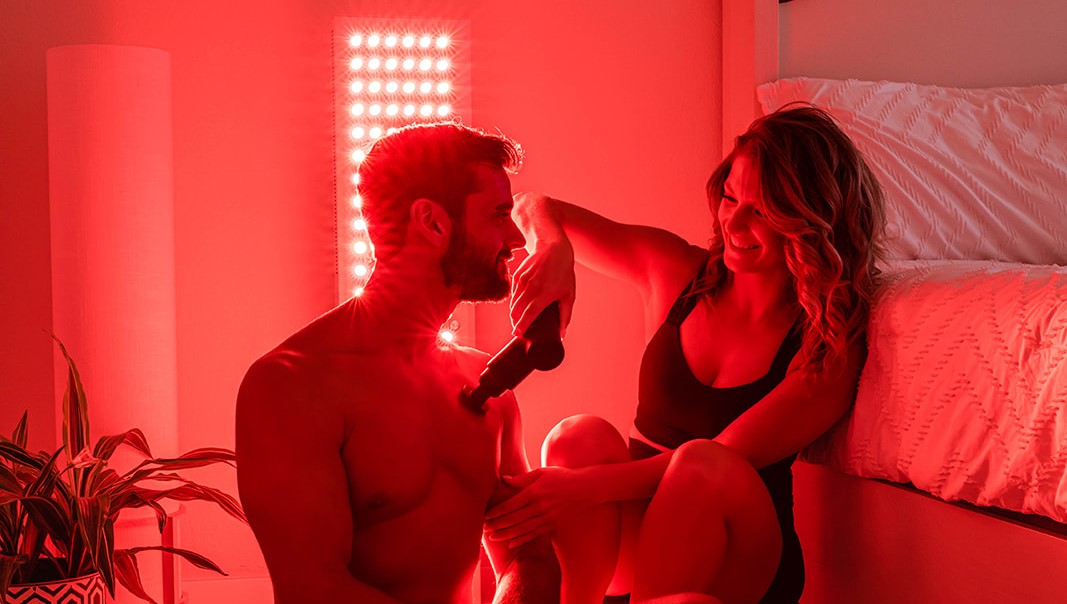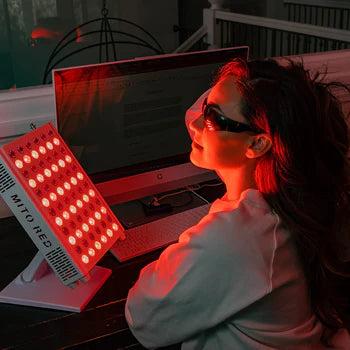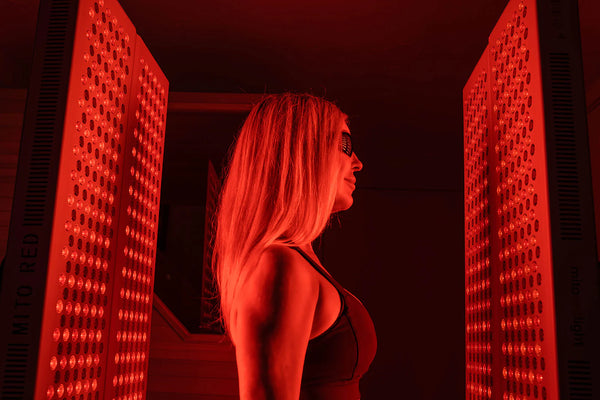DISCLAIMER: Mito Red Light devices are not clinically proven to diagnose, treat, cure, or prevent any medical conditions. Mito Red Light devices are low / risk general wellness devices aimed at affecting the body through supporting cellular function. The scientific studies referenced in this article are for educational and informational purposes only and are meant to educate the reader on the exciting and growing field of phototherapy. To see a list of precautionary warnings and contraindications, click here
Why Some People Do Not Respond to Red Light Therapy
Summary:
While red light therapy (RLT) offers benefits like improved mitochondrial function and enhanced healing, individual responses vary. This can be attributed to factors such as pre-existing mitochondrial health, inadequate treatment parameters (wavelength, dosage, coverage), skin type affecting light penetration, underlying health conditions altering cellular responses, hormonal and genetic differences influencing mitochondrial function, variability in individual cellular repair mechanisms, psychological factors affecting perceived outcomes, and inconsistent or improper application of the therapy. Optimizing mitochondrial function through strategies targeting different respiratory complexes (CoQ10, ALA, NAD+ precursors for Complex I; AKG, succinate, PQQ for Complex II; CoQ10, ubiquinol, Vitamin E, polyphenols for Complex III), along with general approaches like exercise, diet, NAD+ boosters, and cold therapy, may enhance the effectiveness of RLT.
Key Takeaways:
- Individual responses to red light therapy can differ significantly due to a multitude of interacting factors.
- Pre-existing mitochondrial health and the body's ability to respond at a cellular level are crucial for RLT efficacy.
- Optimal treatment parameters, including appropriate wavelength, power density, duration, and coverage, are essential for achieving desired effects.
- Physiological factors like skin pigmentation, underlying health conditions, and hormonal/genetic variations can influence RLT response.
- Lifestyle and psychological factors, as well as consistent and correct application of RLT, play a significant role in its perceived and actual benefits.
Red light therapy (RLT) is known to have various benefits for many individuals, particularly in improving mitochondrial function, supporting a healthy inflammatory response and enhancing healing. However, not everyone responds to red light therapy, and there are several hypotheses as to why this might be the case. Some of these include:
1. Differences in Mitochondrial Function
-
Mitochondrial Health Variability: Red light therapy works by stimulating cytochrome c oxidase in the mitochondria, which helps with ATP production. If an individual has dysfunctional or poorly functioning mitochondria (e.g., due to aging, disease, or genetic factors), they may not respond as effectively to red light therapy. Mitochondria in poor health might not have the capacity to respond optimally to the wavelengths of light. Please see below for more tips on how to improve mitochondrial function.
-
Mitochondrial Biogenesis: Some individuals may have lower rates of mitochondrial biogenesis (the creation of new mitochondria) or may have a less responsive mitochondrial network, which could reduce their ability to benefit from red light therapy.
2. Inadequate Dosage or Treatment Parameters
-
Wavelength and Power Density: Red light therapy generally uses light in the range of 600–650 nm (red light) or 800–850 nm (near-infrared light). If the wavelength or power density is too low, or if the therapy is not applied for the correct duration, it may not have a noticeable effect on the individual. The light may not penetrate deeply enough into tissues to achieve the desired therapeutic effects.
-
Treatment Area: Insufficient coverage of the affected area or improper targeting of tissues might limit the effectiveness of the therapy. For example, treating a localized issue (such as a joint injury) may require a more focused light application, whereas widespread systemic effects (like improving energy levels) may require more comprehensive exposure.
3. Skin Type and Pigmentation
-
Skin Pigmentation: Melanin, the pigment in skin, absorbs light, and darker skin types may absorb more of the light energy, preventing deeper penetration of the therapeutic light. This could reduce the effectiveness of red light therapy in people with darker skin tones, as the light may not reach the deeper tissues or mitochondria as effectively.
-
Skin Condition: Certain skin conditions, such as excessive dryness, inflammation, or damage, might interfere with how light is absorbed or how the body responds to it.
4. Pre-existing Health Conditions
-
Chronic Inflammation or Disease: Individuals with chronic inflammation, autoimmune conditions, or metabolic disorders (e.g., diabetes, cardiovascular disease) may have altered cellular responses, making it harder for them to benefit from red light therapy. In such cases, the therapy may not be able to overcome the underlying dysfunction or inflammation.
-
Compromised Blood Flow: Red light therapy can improve circulation by enhancing nitric oxide production. If an individual has poor circulation due to conditions like peripheral artery disease or other vascular issues, the therapy may not be as effective.
5. Hormonal and Genetic Differences
-
Hormonal Imbalances: Hormones play a role in mitochondrial function and cellular metabolism. People with hormonal imbalances (such as thyroid dysfunction, adrenal issues, or sex hormone imbalances) might experience less pronounced effects from red light therapy. For example, thyroid hormones are essential for mitochondrial activity, and imbalances could reduce the responsiveness to light therapy.
-
Genetic Factors: Genetic differences in mitochondrial DNA, cellular response pathways, and overall metabolism could influence how well someone responds to red light therapy. For example, genetic variations in the function of cytochrome c oxidase, the target of red light therapy, may make some individuals less responsive to the light's effects.
6. Individual Variability in Cellular Response
-
Variability in Cellular Repair Mechanisms: Some people might have more efficient cellular repair mechanisms or a stronger ability to repair mitochondrial damage, while others may have a less efficient response. This could lead to differences in how effectively red light therapy can stimulate healing or improve function.
-
Epigenetic Factors: Environmental factors and lifestyle choices can influence gene expression through epigenetic modifications. If an individual’s cells have adapted to a lifestyle that reduces mitochondrial efficiency (e.g., poor diet, lack of exercise), they may be less responsive to interventions like red light therapy that aim to restore cellular function.
7. Placebo (or Nocebo) Effect and Psychological Factors
-
Nocebo Effect: Some individuals may not respond to red light therapy due to the lack of expectation or belief that it will work. The placebo effect, which is the improvement of symptoms simply because an individual believes they are receiving a treatment - or its counterpart the "Nocebo effect", can sometimes dampen therapeutic responses.
-
Psychological Factors: Stress, anxiety, and depression can alter how individuals perceive the effectiveness of a treatment. A person who is skeptical about red light therapy may not experience the same perceived benefits as someone who is more open to the treatment.
8. Inconsistent Application or Infrequent Use
-
Non-Compliance with Protocol: If red light therapy is not applied consistently or according to recommended guidelines (e.g., the right frequency, duration, or distance from the skin), it might not produce the desired results. For red light therapy to be effective, regular and sustained use is often necessary.
-
Improper Device Use: The effectiveness of red light therapy is also dependent on the quality of the device. Using subpar equipment that does not emit the correct wavelengths or lacks sufficient power output may result in limited therapeutic effects.
Mitochondrial Function
Mitochondrial respiration involves four main protein complexes (Complex I, II, III, and IV) in the electron transport chain, which are responsible for generating ATP. While red light therapy is known to help with Complex IV by enhancing cytochrome c oxidase activity, there are several ways to support and improve the function of Complexes I, II, and III.
Here are some strategies to help boost Complexes I, II, and III:
1. Complex I (NADH:Ubiquinone Oxidoreductase)
-
Coenzyme Q10 (CoQ10): CoQ10, or ubiquinone, is crucial for the functioning of Complex I and helps in the transfer of electrons from NADH to ubiquinone. Supplementing with CoQ10 can support Complex I function.
-
Alpha-lipoic acid (ALA): This antioxidant plays a role in mitochondrial function and can support Complex I by maintaining the redox state of the mitochondria.
-
Nicotinamide riboside (NR) / Nicotinamide mononucleotide (NMN): These are precursors to NAD+ and can help support NAD+ levels, which are crucial for Complex I's activity. NAD+ is necessary for NADH dehydrogenase in Complex I.
-
Exercise: Regular physical activity has been shown to enhance mitochondrial biogenesis and improve the function of mitochondrial complexes, including Complex I.
-
B-Vitamins: Particularly B3 (niacin), which is involved in NAD+ synthesis, can help support Complex I's function.
2. Complex II (Succinate Dehydrogenase)
-
Alpha-ketoglutarate (AKG): AKG can help support Complex II function by acting as an intermediate in the citric acid cycle (Krebs cycle), which is linked to Complex II's function.
-
Succinate: Since Complex II is involved in the oxidation of succinate to fumarate, supplementing with succinate or compounds that support its production can help enhance Complex II activity.
-
PQQ (Pyrroloquinoline quinone): PQQ is an antioxidant that supports mitochondrial function and has been shown to enhance the activity of Complex II in some studies.
-
Exercise: As with Complex I, physical activity can enhance mitochondrial function, including that of Complex II.
3. Complex III (Cytochrome bc1 Complex)
-
Coenzyme Q10 (CoQ10): CoQ10 is also involved with Complex III, where it functions as an electron carrier between Complexes I/II and Complex III. CoQ10 supplementation can support this process.
-
Ubiquinol: This is the reduced form of CoQ10 and is particularly beneficial for supporting the function of both Complexes I and III. It helps in electron transfer and energy production.
-
Vitamin E (α-Tocopherol): This antioxidant helps protect the mitochondrial membrane from oxidative stress, which can support the overall integrity and function of Complex III.
-
Polyphenols: Compounds like resveratrol and curcumin are known to help enhance mitochondrial function and may have a protective effect on Complex III.
4. General Strategies for Enhancing Mitochondrial Function
-
NAD+ Boosters: NAD+ precursors like nicotinamide riboside (NR) and NMN are beneficial for supporting overall mitochondrial function, particularly for Complexes I and III.
-
Diet: A diet rich in antioxidants, healthy fats (like omega-3s), and compounds like polyphenols (found in fruits, vegetables, and green tea) can reduce oxidative stress and improve mitochondrial efficiency.
-
Mitochondrial Biogenesis: Strategies like regular physical exercise, intermittent fasting, and caloric restriction can promote mitochondrial biogenesis, enhancing the number and function of mitochondria.
-
Cold Therapy (Cryotherapy): Cold exposure has been shown to promote mitochondrial biogenesis, which supports the function of all mitochondrial complexes.
Each of these strategies targets specific aspects of mitochondrial health and can help support the function of Complexes I, II, and III. Combining them with other healthy lifestyle practices, such as regular exercise and proper sleep, can further optimize mitochondrial function.

